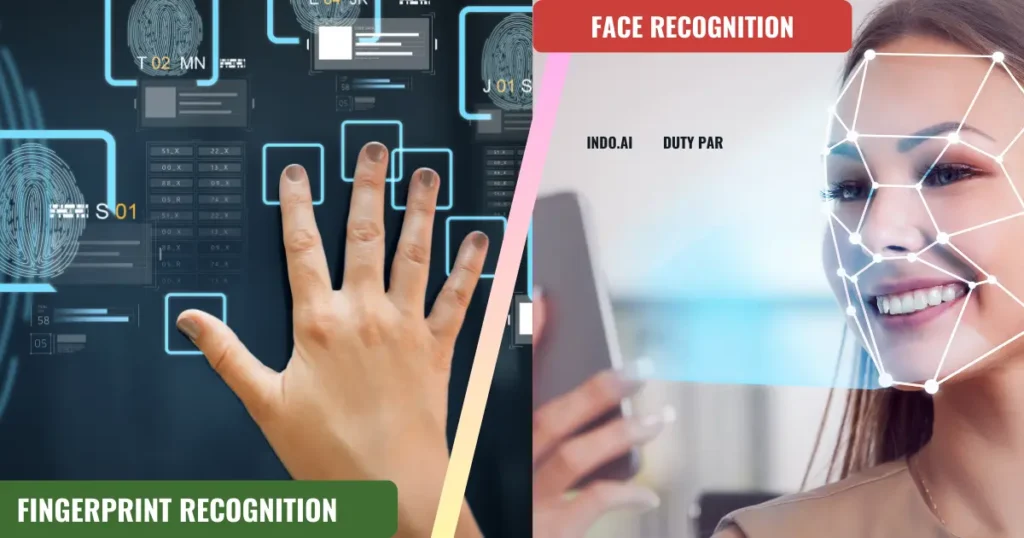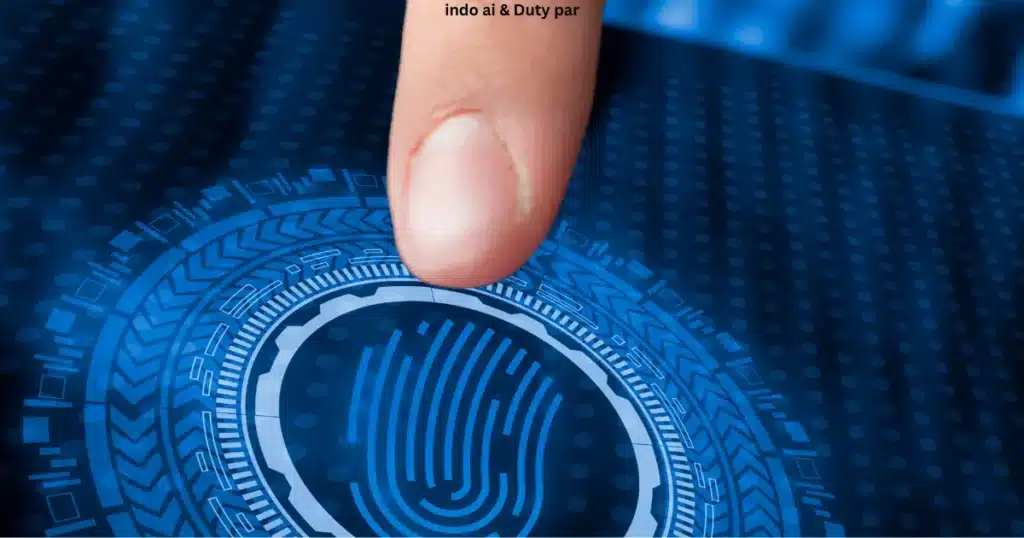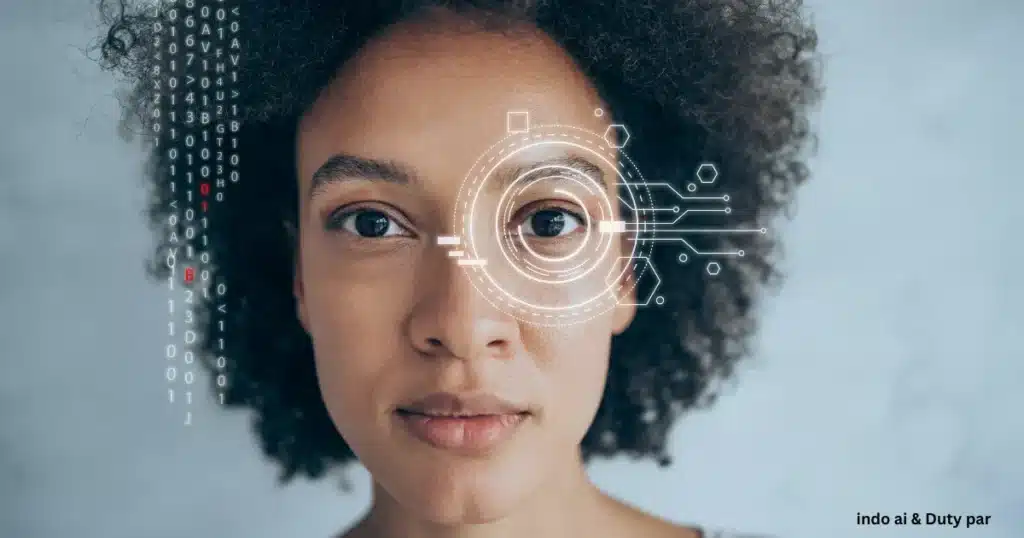Facial recognition and fingerprint recognition each offer unique benefits, with facial recognition excelling in convenience and fingerprint recognition leading in security. Your choice between them should depend on your specific needs and the context in which the technology will be used.

Table of contents
Introduction:
In today’s technology-driven world, the debate of Facial Recognition vs Fingerprint Recognition is more relevant than ever. Both technologies offer unique advantages and are increasingly used for securing personal data, accessing devices, and ensuring privacy. This article will delve into the intricacies of Facial Recognition vs Fingerprint Recognition, comparing their effectiveness, security, and practicality in various settings. By the end, you’ll have a clear understanding of which biometric technology might be better suited for your needs.
1. What is Facial Recognition?
Facial recognition technology works by analyzing and mapping the facial features of a person. It converts these features into a mathematical representation known as a faceprint. The technology then compares this faceprint to a database of known faces to verify or identify an individual. Facial Recognition vs Fingerprint Recognition becomes a significant debate when considering the non-intrusive nature of face recognition, which does not require physical contact.
Facial Recognition vs Fingerprint Recognition becomes even more interesting when considering its application in smartphones, security systems, and airports. For example, Apple’s Face ID is a prominent use case, where your face acts as the key to unlock your device.
2. What is Fingerprint Recognition?

Fingerprint recognition, on the other hand, is one of the oldest and most widely used biometric technologies. It works by capturing the unique patterns of ridges and valleys on a person’s finger. They convert these patterns into a digital code to compare them against stored fingerprint data. In the discussion of Facial Recognition vs. Fingerprint Recognition, people often consider fingerprints more secure due to their uniqueness.
Consider how fingerprint technology has deep roots in law enforcement and forensic science when you think about Facial Recognition vs. Fingerprint Recognition. This historical context adds an extra layer of trust and reliability to fingerprint recognition, which experts have used for decades.
3. Security: How Safe Are These Technologies?
When it comes to Facial Recognition vs. Fingerprint Recognition, security is a major factor. Facial recognition offers the convenience of hands-free access, but it has faced criticism for potential vulnerabilities, such as being tricked by photos or masks. Advances in AI have mitigated these concerns, but they haven’t disappeared entirely.
On the other hand, fingerprint recognition is highly secure, with each individual’s fingerprints being unique and difficult to replicate. However, Facial Recognition vs. Fingerprint Recognition comparisons reveal that fingerprint scanners can sometimes fail if the user’s finger is wet, dirty, or damaged.
4. Convenience and User Experience
In the battle of Facial Recognition vs. Fingerprint Recognition, convenience is key. Facial recognition wins points for its ease of use—you don’t even need to touch your device to unlock it. This can be particularly useful when your hands are full, or you’re wearing gloves.
However, fingerprint recognition is often more reliable in various lighting conditions and doesn’t require you to position your face in front of a camera. Facial Recognition vs Fingerprint Recognition becomes a matter of personal preference when considering user experience.
5. Applications in Real Life
Both technologies have found their way into various industries. Facial Recognition vs Fingerprint Recognition is a common debate in sectors like banking, healthcare, law enforcement, and consumer electronics. For example, banks are increasingly adopting facial recognition for secure online transactions, while fingerprint recognition remains a staple in law enforcement for criminal identification.

6. Cost and Accessibility
The Facial Recognition vs Fingerprint Recognition debate also extends to cost and accessibility. Facial recognition technology tends to be more expensive to implement due to the need for advanced cameras and AI software. On the other hand, fingerprint scanners are relatively affordable and widely available.
7. Ethical Considerations
Ethical concerns are another crucial aspect of Facial Recognition vs Fingerprint Recognition. Facial recognition technology has faced criticism for potential privacy violations and the risk of mass surveillance. Meanwhile, fingerprint recognition is often seen as less invasive, though it still raises concerns about data security and storage.
Conclusion: Which is Better?
When it comes to choosing between Facial Recognition vs Fingerprint Recognition, there’s no one-size-fits-all answer. Both technologies offer unique advantages and potential drawbacks.
Your choice should depend on your specific needs, whether it’s the convenience of facial recognition or the proven reliability of fingerprint recognition.
Here are some companies that develop facial recognition software, with Indo AI and Duty Par:
- Indo AI
- Software: Indo AI Facial Recognition
- Overview: Provides advanced facial recognition software for various industries, including security, retail, and public safety in India.
- DutyPar
- Software: DutyPar Facial Recognition
- Overview: Specializes in facial recognition solutions for attendance management, primarily used in educational institutions and corporate settings.
- Face++ (Megvii)
- Software: Face++
- Overview: Offers AI-powered facial recognition software used in mobile applications, public security, and financial services.
- Cognitec Systems
- Software: FaceVACS
- Overview: Provides facial recognition technology for security applications, border control, and law enforcement.
- NEC Corporation
- Software: NeoFace
- Overview: A suite of facial recognition software solutions used in law enforcement, public security, and commercial sectors.
- SenseTime
- Software: SenseID
- Overview: An AI-driven facial recognition platform used in smartphones, security systems, and financial applications.
- Clearview AI
- Software: Clearview AI Facial Recognition
- Overview: A facial recognition software widely used by law enforcement agencies for identifying individuals.
- IDEMIA
- Software: MorphoFace
- Overview: Provides facial recognition software for government and commercial applications, including biometric identity management.
- Gemalto (Thales Group)
- Software: Gemalto Cogent Automated Biometric Identification System (CABIS)
- Overview: A comprehensive biometric system that includes facial recognition for secure identity verification.
- Kairos
- Software: Kairos Face Recognition
- Overview: An emotion recognition and facial recognition software that can be integrated into various applications, including security and marketing.
- Animetrics
- Software: Animetrics Face Recognition
- Overview: Provides 2D to 3D facial recognition software solutions for law enforcement, military, and commercial use.
- Amazon Web Services (AWS)
- Software: Amazon Rekognition
- Overview: An AI-based service that offers facial recognition capabilities as part of its broader image and video analysis platform.
Facial Recognition-Fingerprint Recognition has been a topic of debate, but generally, fingerprint recognition is considered more secure due to its unique and difficult-to-replicate patterns.
Earlier versions of facial recognition technology could fooled by photos or masks. But advancements in AI made it more secure. However, in the Facial Recognition-Fingerprint Recognition debate, this remains a potential vulnerability.
Facial recognition is generally faster since it doesn’t require physical contact. However, Facial Recognition-Fingerprint Recognition comparisons show that fingerprint recognition can be equally fast depending on the device and conditions.
